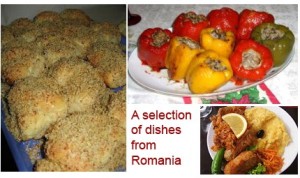Shreyas Tanna of Health Gazette reports that 24 people in the UK and eight in Ireland have been sickened with Salmonella Bredeney linked to cooked, chilled pork from Romania.
Infections from this outbreak have been reported from 2017 till 2019.

Shreyas Tanna of Health Gazette reports that 24 people in the UK and eight in Ireland have been sickened with Salmonella Bredeney linked to cooked, chilled pork from Romania.
Infections from this outbreak have been reported from 2017 till 2019.
A multi-country outbreak of Shiga toxin-producing Escherichia coli (STEC) infection associated with hemolytic uremic syndrome (HUS) and affecting mostly young children has been reported in the last two months in Romania.
Italy reported one related HUS case through the Early Warning and Response System (EWRS) on 21 March 2016.
Overall, 25 cases were identified as associated with this outbreak, of which 19 developed HUS and three died. Twelve cases had microbiological and/or serological evidence of STEC O26 infection; 13 additional cases met the probable case definition by developing HUS, testing positive for another STEC O serogroup (O157) or by testing positive by PCR for stx1 and/or stx2 and eae genes.
Information collected from patients pointed towards a milk processing establishment (the Romanian operator) as a possible source of infection. The implicated milk processing establishment exported a particular type of cheese to four EU countries (Belgium, Germany, Italy and Spain) and one Italian importer further distributed this product to France and Germany. In Romania, one fresh cheese product made of cow’s milk produced by the Romanian operator tested positive for E. coli O26 not possessing stx virulence genes. Other dairy products produced by the Romanian operator tested positive for E. coli virulence genes stx1, stx2 and eae. In Italy, a STEC O26 strain (positive for stx1, stx2 and eae) was isolated from a sample of the cheese that had been produced by the Romanian operator, imported from Romania and consumed by the Italian child that later developed HUS (stool samples negative for STEC but serum samples positive for the presence of antibodies against the LPS of E. coli O26). The PFGE analysis suggests the potential involvement of multiple strains from a common source or from multiple sources. Multi-strain STEC outbreaks have been reported in the past [1]. Therefore, it cannot be excluded that the cases belong to a single outbreak associated with a source contaminated by different strains.
The epidemiological evidence linking some of the Romanian cases and the Italian case to the Romanian operator, in addition to the microbiological findings, are consistent with the hypothesis of a multi-strain outbreak. The last Romanian case associated with this outbreak had onset of symptoms on 14 March. The cheese consumed by the Italian case was imported in Italy from Romania on 1 March and had been produced on 18 February 2016 with an expiry date of 18 April 2016. A recall of the company products was undertaken in Romania as of 5 March and in Italy as of 15 March. Other Member States subsequently undertook recalls. According to information available at the time of conducting this assessment, the withdrawal of potentially contaminated dairy products following a recall has been limited in Member States, with the exception of Romania. It is therefore possible that affected products are still present in households, and detection of new cases cannot be excluded. In order to minimise the spread of the infection and investigate possible new cases in a timely manner, Romania, Italy and other Member States that are possibly involved could consider enhancing surveillance for HUS and STEC cases. Continued enhanced surveillance for HUS in children on a routine basis in Romania could provide further early warning of ongoing or new contamination events. The questionnaire used to interview some of the Romanian cases and the Italian case is available in English from ECDC upon request. If new cases are identified, these should be reported to the Epidemic Intelligence Information System for food- and waterborne diseases (EPIS-FWD). In such situations public health authorities could also consider conducting an epidemiological analytical study and including further food and environmental sampling in suspect premises to identify the vehicle of Multi-country outbreak of infection. Whole genome sequencing (WGS) on isolates detected so far should be carried out to provide more detailed information about possible links between cases. The investigation of the European dimension of this cross-border foodborne outbreak has demonstrated the added value of collaboration between Romanian and Italian public health and food authorities as well as ECDC and EFSA in enabling appropriate risk assessment and response.
The European Commission has issued an alert over possible Escherichia coli (E. coli) in sheep milk cheese made in Romania.
 According to the alert issued in the RASFF – the Rapid Alert System for Food and Feed, the cheese comes from Romania and has been mainly distributed in Italy, France, and Germany.
According to the alert issued in the RASFF – the Rapid Alert System for Food and Feed, the cheese comes from Romania and has been mainly distributed in Italy, France, and Germany.
The Commission decided to issue such an alert after a notification from Italy. The Italian authorities confirmed on Thursday that cheese infected with E. coli caused intestinal infection in a 14-month old Romanian baby admitted to a hospital in Florence, reports local Mediafax. The cheese is believed to have come from Romanian dairy producer Lactate Bradet SRL, headquartered in Arges county.
Referring to this incident, Romanian Agriculture Minister Achim Irimescu said that the contamination of Romanian cheese with E. coli is an accident, and people should still have confidence in Romanian products, local Agerpres reports.
Lactate Bradet has recently been at the core of a media scandal after Romanian authorities said its dairy products caused the E. coli infection that resulted in the illness and even death of several children from Arges county. However, the Cantacuzino research institute in Bucharest later showed that the Bradet cheese was not the source of infection.
The situation escalated on Friday, March 18, when the management of the Sanitary-Veterinary and Food Safety Authority (ANSVSA) announced that over 20 tons of Bradet dairy products have been withdrawn from the Romanian market. A similar decision was also taken in Spain (over 1 ton) and Italy (546 kg), reports local Mediafax.
Authorities have withdrawn from the market all the products Bradet made in February, according to the food safety authority, which also recommended people not to consume these products.
As at 29 February 2016, 15 cases of hemolytic uremic syndrome with onset between 25 January and 22 February were reported among children between five and 38 months in Romania, and three of them died.
 Cases were mostly from southern Romania. Six cases tested positive for Escherichia coli O26 by serology. Fruits, vegetables, meat and dairy products were among the possible common food exposures. Investigations are ongoing in Romania to control the outbreak.
Cases were mostly from southern Romania. Six cases tested positive for Escherichia coli O26 by serology. Fruits, vegetables, meat and dairy products were among the possible common food exposures. Investigations are ongoing in Romania to control the outbreak.
Early findings in outbreak of hemolytic uremic syndrome among young children caused by Shiga toxin-producing Escherichia coli, Romania, January to February 2016
Euro Surveill. 2016;21(11):pii=30170
Peron E, Zaharia A, Zota L, Severi E, Mårdh O, Usein C, Bălgrădean M, Espinosa L, Jansa J, Scavia G, Rafila A, Serban A, Pistol A.
http://www.eurosurveillance.org/ViewArticle.aspx?ArticleId=21417
Five children have been developed hemolytic uremic syndrome amongst a total of 51 sick children — 43 younger than two-years-old — at Marie Curie Hospital in Bucharest due to E. coli O26.
 Romanian minister of agriculture Achim Irimescu said Monday E. coli O26 was discovered in dairy products in Arges County especially in cottage cheese produced by ‘Lactate Bradet.’
Romanian minister of agriculture Achim Irimescu said Monday E. coli O26 was discovered in dairy products in Arges County especially in cottage cheese produced by ‘Lactate Bradet.’
At the same time, The National Veterinary Authority for Food Safety (ANSVSA) sent a press release by which they said that on 25 February joint teams made up of inspectors from Arges and Dolj started the action of taking samples which were sent to be analysed to the Institute for Public Health (IISPV).
According to the results of the inquiry, in which 194 samples analysed up to that date, E.coli O26 was found in a chicken sample taken from the fridge of one of the persons under inquiry. The meat came from chickens raised in the household of the respective person (Bacau county).
At the same time, the bacteria was discovered in samples taken from 25 kg of cottage cheese produced by a dairy unit in Arges (Lactate Bradet).
Health Minister Patriciu Achimas-Cadariu told a news conference on Thursday that E. coli O26 was the cause of hemolytic-uremic syndrome that sickened infants of Arges County (numbers not provided).
 As far as the management of the Arges Public Healthcare Directorate is concerned, the minister said the control team of the Health Ministry is conducting an investigation that should end on March 4.
As far as the management of the Arges Public Healthcare Directorate is concerned, the minister said the control team of the Health Ministry is conducting an investigation that should end on March 4.
My friend called from her temporary work assignment in Romania. She is trying to manage a large project under difficult conditions, including constantly dodging foodborne illness. With one crew member hospitalized for foodborne illness last week, and several others sick this week you might think they were working in a difficult, rural locale. But no, they are working in a government building and housed in a good hotel. So, how does she explain this?
 The government building has no toilet paper or soap. She and her crew bring those supplies every day now, and every day they are stolen. This weekend she is going to buy more toilet paper, hand sanitizer and liquid soap to fill the soap dispensers because she thinks liquid soap will be more difficult to steal. Poop is not good for you, even if it is your own.
The government building has no toilet paper or soap. She and her crew bring those supplies every day now, and every day they are stolen. This weekend she is going to buy more toilet paper, hand sanitizer and liquid soap to fill the soap dispensers because she thinks liquid soap will be more difficult to steal. Poop is not good for you, even if it is your own.
After several crew members were sickened from pizza ordered in, she has begun bringing bagels and uncut fruit from the hotel for everyone. She wants to get this project done, so she’s wise to steer clear of catered food. Romanian researchers thoroughly examined the foods and bacteria implicated in outbreaks of foodborne illness from catered food (Ivana, et al, 2009). They main culprits were Staphylococcus aureus, (don’t eat food made by people with dirty hands) C. perfringens (don’t eat undercooked meat), C. botulinum (don’t eat home canned meat); and Salmonella spp (don’t eat runny eggs, don’t eat food that has been undercooked and don’t eat food that has been cooked and then reheated).
The foods associated with outbreaks between 2003-2008 do not leave many safe choices: beef, poultry, milk, eggs, vegetables, ham, seafood, ice cream and cheese were all implicated. The illness in her crew is costing her company money and her colleagues are harming their health. The moral of this story is to bring your own hygiene supplies when travelling and working in Romania. And bring safe snacks from home such as packaged granola bars, almonds and dried fruit. Only eat cooked food when it is freshly prepared and still piping hot.
Reference: Simona Ivana, Alexandru Bogdan, Ipate Judith, Laurentiu Tudor, B??r??it??reanu Stelian, Andrei T??nase, Alexandru Nicolae Popescu, Dana Magdalena Caplan, Mihai Dane??. 2009. Food Microbial Contamination – The main danger in catering type food in Romania. Romanian Biotechnical Letters, Vol 14, #2, pp 4260-4266